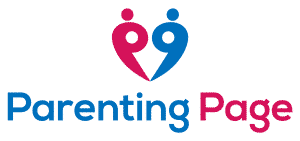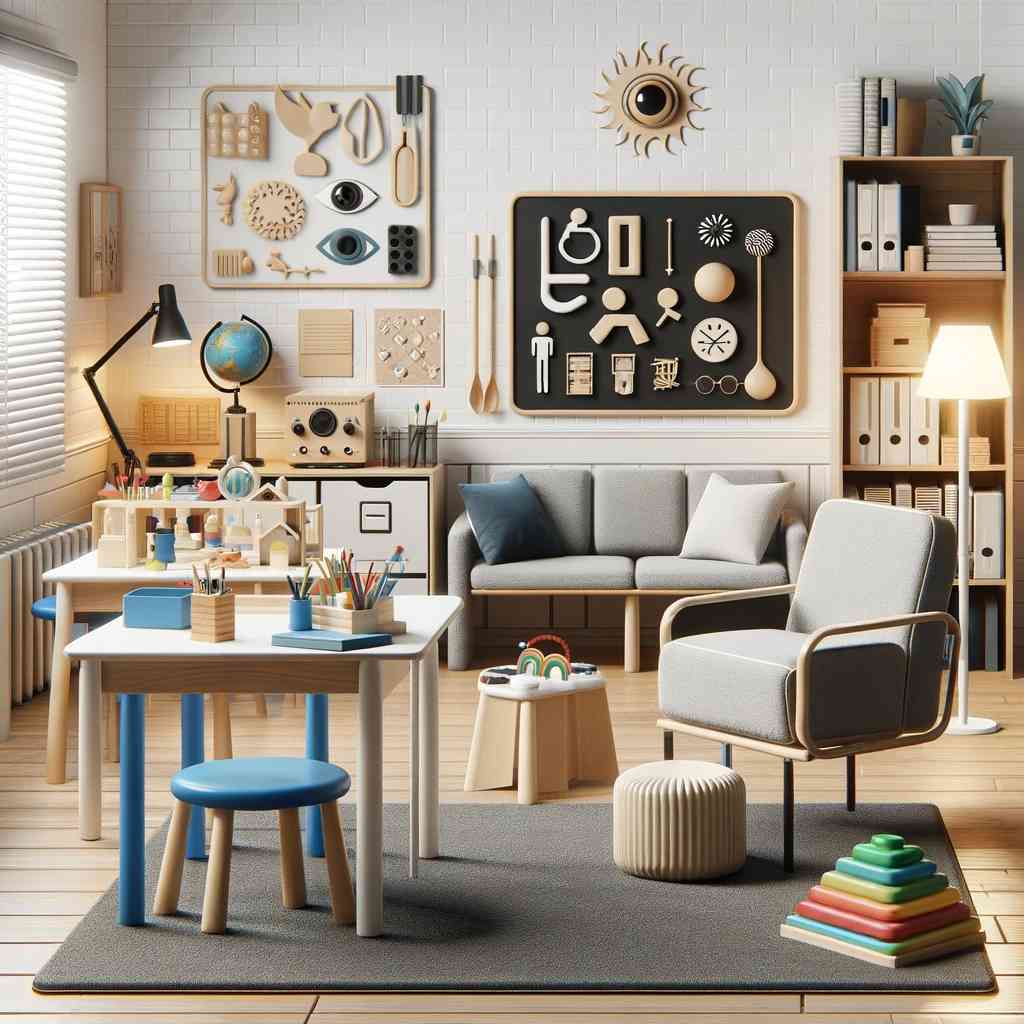Table of Contents
If I were to ask you, “What makes a perfect classroom?” your mind might wander back to those childhood days of neatly stacked books, an orderly row of chairs, and maybe even the good ol’ green chalkboard stained with the faded marks of previous lessons. But what if we turn the attention to special education classrooms? Ah! Things would look very different and a lot more interesting!
Understanding Special Needs
Do you remember the game ‘tug of war’? In one way or another, that’s how it feels like navigating life with special needs. Now picture yourself as a teacher, designing a learning space for these brilliant minds. It’s an important responsibility that carries the potential to make a huge difference in these young learners’ lives.
‘Special needs’ is not just a term; it’s a collection of unique narratives. They range from physical challenges, speech and language impairments, emotional difficulties to specific learning differences and beyond. Every child’s need is as different as chalk and cheese. The blueprint of your ‘perfect classroom’ must address these diverse requirements.
Setting up a Special Education Classroom: An Overview
Picture this: you’re an architect, you’re on site and all around you is possibility. That’s the vibe when you are setting up your special education classroom.with three underlying principles – safety, flexibility and comfort.
Imagine adjustable furniture that ‘grows’ with children – isn’t that thoughtful? Then there’s technology – projectors, speaking devices, Braille tools – quite like our superhero gadgets! Oh, not forgetting sensory materials like texture mats or calming light projectors which are akin to our magic wands sprinkling sparkles in the classroom.
Essential Furniture in a Special Education Classroom
Let’s play a game of ‘classroom makeover’! The first things that come to mind are cozy classrooms filled with stacks of books, colourful artwork and children laughing, learning and exploring. But in a special education classroom, we have unique priorities for our essential furniture lineup.
Tables and chairs that can be adjusted as per the child’s height or comfort preferences. Rather than the regular desks, focus on mobile furniture which could accommodate wheelchairs or supportive tech. Storage units are another important player here. Functional, safe and accessible storage spaces can simplify class routines as well as reduce clutter. Comfortable and encompassing seating options like couches or bean bags can give our ‘classroom makeover’ game a fun spin!
Assistive Technology Tools
Magic spell books, enchanted objects, and flying carpets did wonders in fantasy stories. In the real world magic lies within technology tools that transform lives every day.
A student who finds it challenging to express his thoughts might find companionship in speech generating devices (our modern-day talking mirror, if you will). Then there are Braille tools for our vision impaired fellow-students. Augmentative communication apps can prove to be the magic key for many otherwise locked doors in their world.
Interactive Learning Tools
If we could teleport ourselves into Harry Potter’s enchanting classrooms (I wish!), you’ll observe students learning through engaging methods – practical applications, experiments, demonstrations – our non-magical equivalent? Interactive learning tools!
Interactive whiteboards for group learning sessions act like big windows opening up to interactive lessons. Specialized software applications aid personalised instruction based on each student’s abilities. Sensory toys help sharpen cognitive skills while adding a dollop of fun to the proceedings.
Teaching Materials tailored for Individual Learning Styles
Remember how we used to learn the alphabet? Some of us picked up letters by hearing, some may have learned by seeing colourful charts and yet others learned by tracing them on sand. In our special education setup, it’s as if each student speaks a language of their own. The teaching materials need to be fluent in these individual ‘languages’.
Visual aids like illustrated storybooks or sign language charts come handy for those who rely heavily on visual inputs, while CDs or audio narrations offer a valuable toolset to auditory learners. Kinesthetic aids like multi-textured craft supplies or movement-based activities can create an orchestra of engaging and meaningful learning experiences.
Accessibility Features
Think about a regular day at school but imagine if you had to navigate it using a wheelchair or with vision limitations. Seems challenging right? When designing our dream classroom, we have to ensure it’s a space where accessibility is not an afterthought, but a central focus.
Having ramps and wheelchair-accessible desks are just the starting points. Equally important are restroom facilities that cater for everyone in the friendliest way possible. Inclusion isn’t only about participation; it is about ease, comfort, autonomy and dignity as well.
Therapeutic Tools
If there was one thing I wish I had in my old classrooms was a nap-time hammock! But let’s be honest, our needs might be simple nap-times and coffee-machines, but when it comes to our special friends their therapeutic tools may be slightly different.
A gym area filled with adaptive equipment can open new avenues of fun-filled physical exercise, aiding their overall well-being. Relaxation aids like strategically placed noise-cancelling headphones or calming lava lamps can act like those tiny islands of peace in the middle of a bustling class environment.
Non-academic Essential Supplies
The bell rings, lunchboxes open up and the air fills with aromas from multiple home kitchens. But wait! Are there specialised dietary requirements for some students? Do they have specific medical supplies that need our attention?
In our dream classroom, these non-academic essential supplies share equal importance as academic ones. A mini kitchenette with allergy-safe cooking facilities or a medication cabinet within easy reach of the staff – small tweaks but significant impacts!
Implementing Universal Design Learning (UDL) Principles
Wish you could travel back in time to tell your youthful self that it’s okay to dislike Math or struggle with Art? We are all wired differently and Universal Design Learning (UDL) principles echo just that. They encourage teaching methods that are flexible and accommodating for everyone, just like your favorite pair of jeans!
UDL promotes an environment where lesson plans aren’t rigid templates but elastic, fitting to every learner’s style and pace. It is like giving them the joy of climbing multiple trees instead of the old school run-up-the-hill approach.
Building an Inclusive Culture in the Classroom
We want our children not just to learn about shapes and numbers but also about respect, empathy, teamwork and kindness. As we set up our dream class, we are also setting up a small community where these values play a central role.
Classroom rules should serve as guiding stars fostering friendships rather than stern signboards that yell “Don’t run!” And what could be better than encouraging collaborative learning which can double up as social skill training?
Dealing with Behavioral Challenges
Some kids might throw tantrums if they don’t get their favorite color crayons while others might shut down during a noisy group activity. Behavioral challenges vary vastly in a special needs setup; one size simply does not fit all!
Schedules are the invisible threads weaving structure into a classroom – visual schedules could be game-changers here! Add a bit of predictability to help manage anxiety issues. Just remember, when it comes to behavioral challenges, a gentle word can turn away wrath.
Engaging Parents and Guardians
Dialing home isn’t just for reporting missing homework or an exceptional star on the test anymore! When it comes to special education classrooms, parents aren’t spectators but team players. The teacher-parent partnership takes the front seat driving child’s learning journey forward.
Whether it is regular check-ins, involvement in Individualized Education Program (IEP) planning, or collaboration via tech platforms – parents are a part of the squad. After all, we are allies focusing on the same goal – an enriching and empathetic learning experience for their kids.
Teacher Tools for Planning and Organization
Think of yourself as a wizard equipped with an array of magical tools – your objective is to bring harmony in an ever-changing, dynamic special needs classroom. This magic comes from efficient planning and organization tools meant just for you.
A customized lesson planning template where you can jot down the day’s agenda or a student tracker that keeps record of individual progress – these aren’t just utilities but lifelines of a harmonious special education classroom. Not to forget, grading and assessment tools that make record-keeping less tedious and more systematic. It’s like casting a spell of structure over what would have been absolute chaos!
Professional Development for Special Education Teachers
You remember how we wish we could tell our past selves about the indifference towards math or art? We learn as we grow, don’t we? And this stands true even for teachers especially those working in special education classrooms.
Innovative teaching strategies, behavioral management techniques, utilizing assistive technology efficiently – the learning never stops. Professional development resources like seminars, online courses, workshops help teachers stay at the top of their game, constantly evolving and improving. Basically, you’re in school forever too – but isn’t it fun?
Managing Transitions in the Special Education Classroom
As a child I remember feeling anxious when transitioning from one grade to another. Now imagine this from the perspective of someone with special needs. Sounds bit challenging doesn’t it? But that’s where our responsibility comes in.
Creating smooth transitions between activities within a day using visual schedules or sensory breaks can prevent anxieties from snowballing. Transitioning between different school years can be made easier via dedicated transition plans. The end objective? Ensuring that every stepping stone improves their confidence for the journey ahead.
Safety Measures
In our quest to deck out our dream special education classroom, let’s not forget one of the most important pillars – safety. Picture yourself as the diligent keeper of a beautiful sanctuary. Whether it’s through regular evacuation drills, secure storage of materials or routine checks on accessible features – safety is paramount.
Funding and Grants
Designing high-quality learning experiences can sometimes require resources that stretch beyond regular school budgets. The good news is, there are numerous funding channels and grants available specifically for special education. These provide the financial backing needed to turn our dream classroom into a reality – kind of like finding a secret treasure chest in an adventure game!
Do Special Education Classroom Must Haves Include Resources for Students with High School Diplomas?
Special education classroom must-haves should definitely include resources for students with high school diplomas. Even if some may argue that having a high school diploma doesn’t guarantee job placement, it is still an important milestone for many individuals. Plus, it can impact their future in terms of background checks.
Refreshing Spaces Regularly
Last but definitely not least – remember, the work in crafting the perfect special ed classroom never really ends. It’s an ongoing process that requires thoughtful revisions and occasional makeovers. Because hey, what’s life without a bit of change and tons of improvement?
Conclusion
We have taken you on a rollercoaster ride through what it’s like setting up a special education classroom – an arena ripe with possibilities to make meaningful change. We have journeyed through understanding special needs, setting up classrooms, all the way down to professional development for teachers – phew! Remember this: a classroom isn’t defined by its four walls, but by the magic that happens within.

